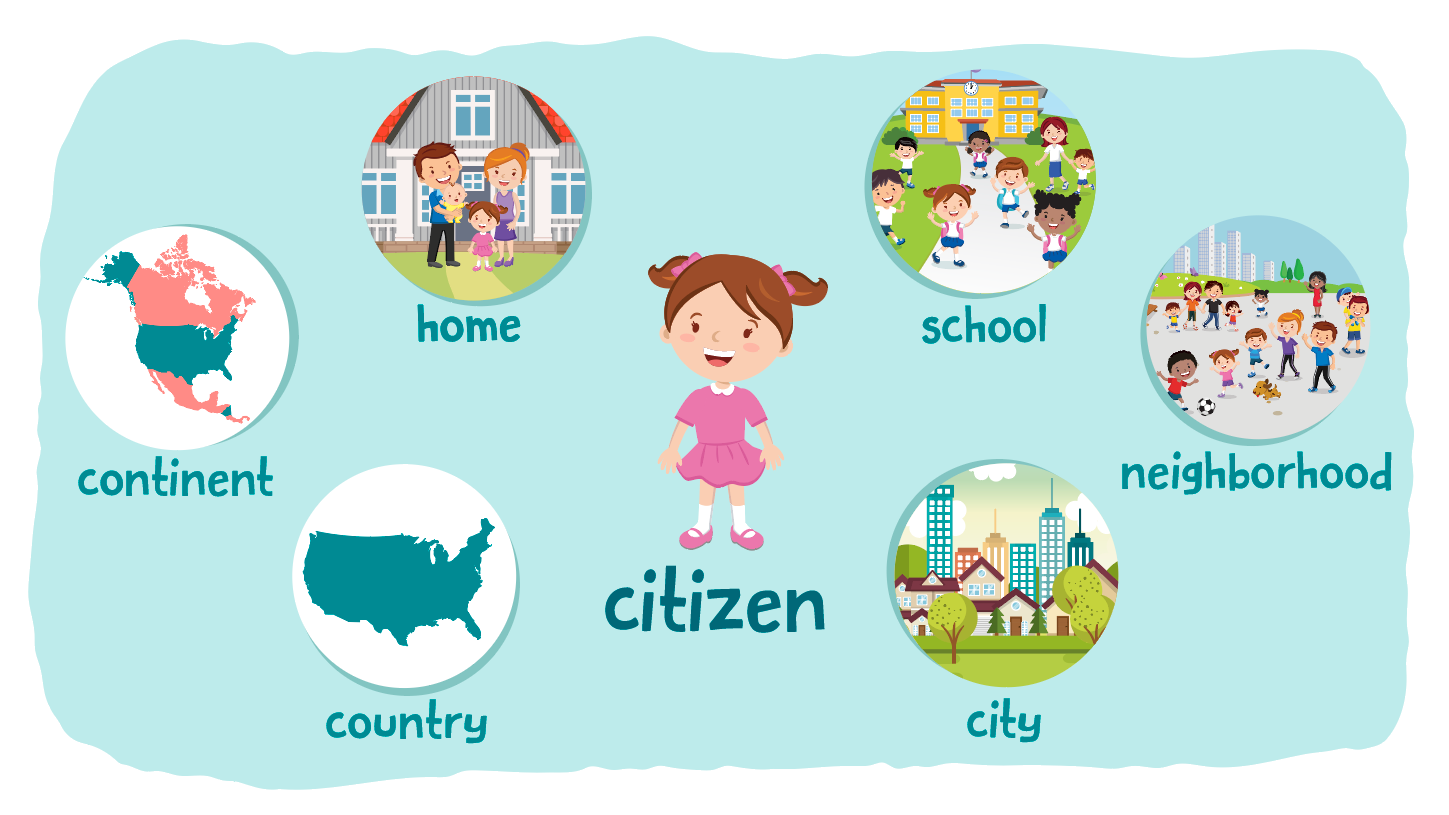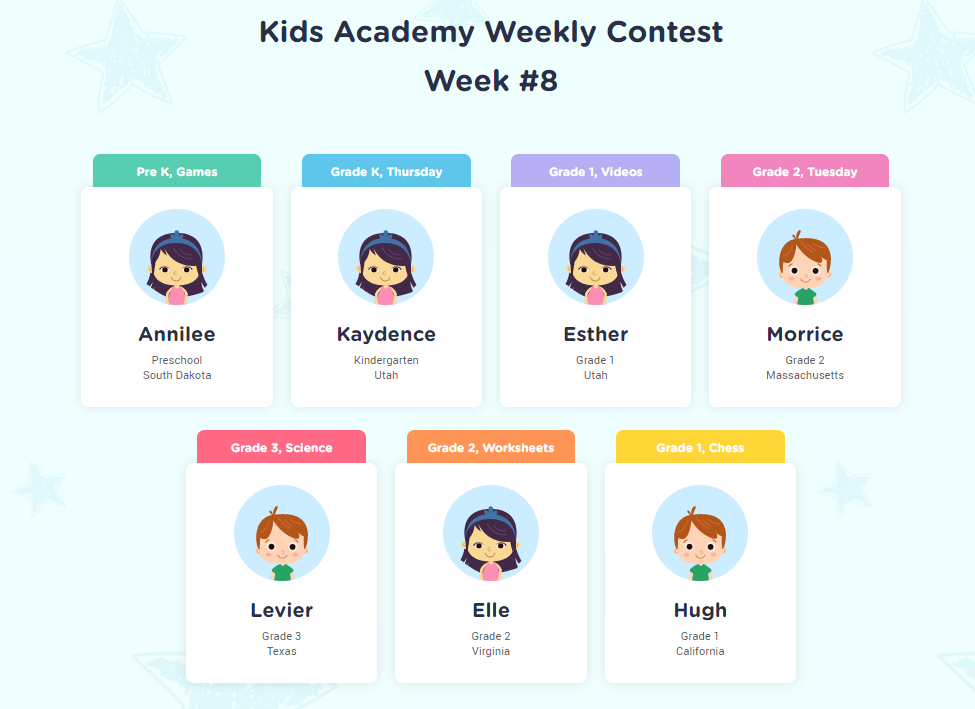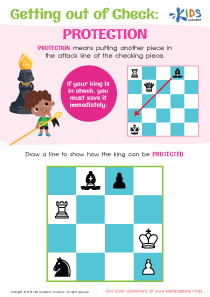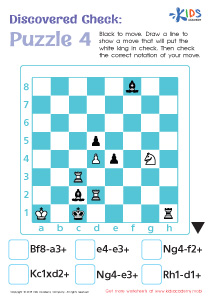Chess Worksheets for Ages 3-7
86 filtered results
-
From - To
Unlock the magical world of chess for young minds with our specially designed Chess Worksheets for Ages 3-7! These engaging and educational worksheets introduce children to the fundamentals of chess through fun and interactive activities. Each worksheet is crafted to develop critical thinking, strategy, and problem-solving skills, all while fostering a love for the game. With age-appropriate challenges, colorful illustrations, and step-by-step guidance, even the youngest players can enjoy learning the timeless game of chess. Perfect for both beginners and budding enthusiasts, our worksheets make chess accessible and enjoyable for kids. Let the chess adventure begin!
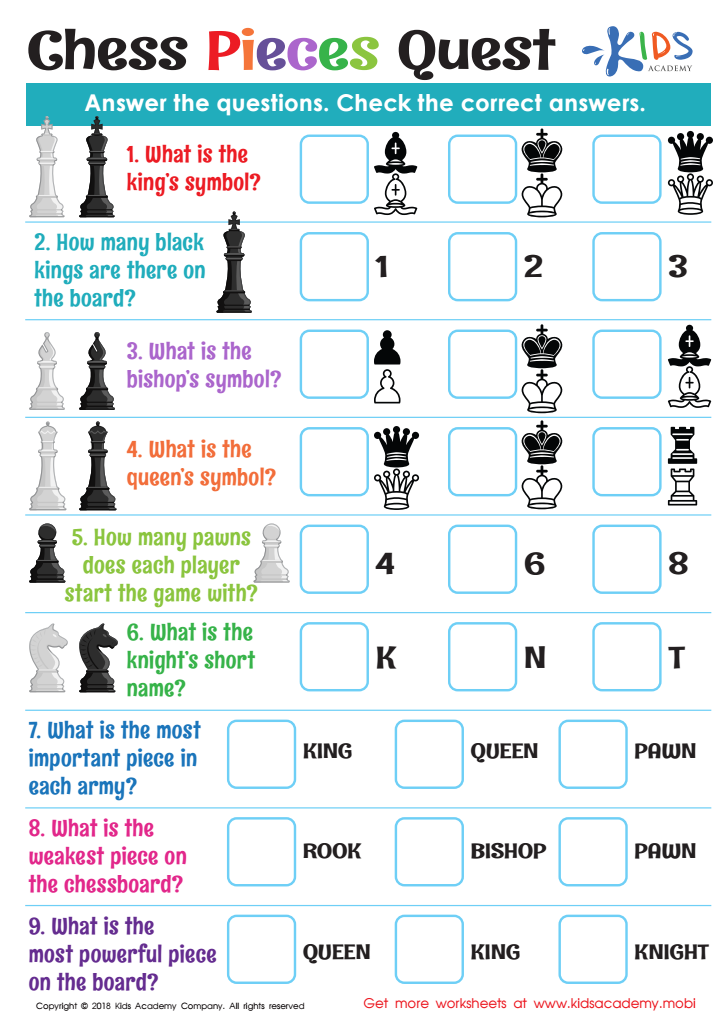

Chess Pieces Quest Worksheet


Notation of Moves Writing it Down Worksheet
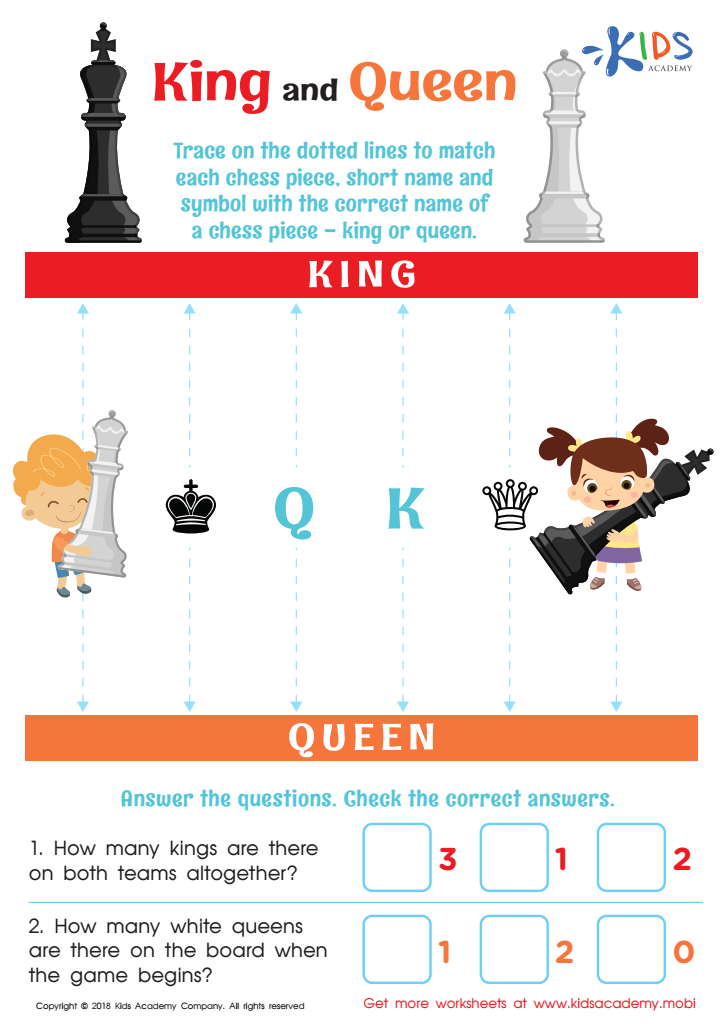

King and Queen Worksheet
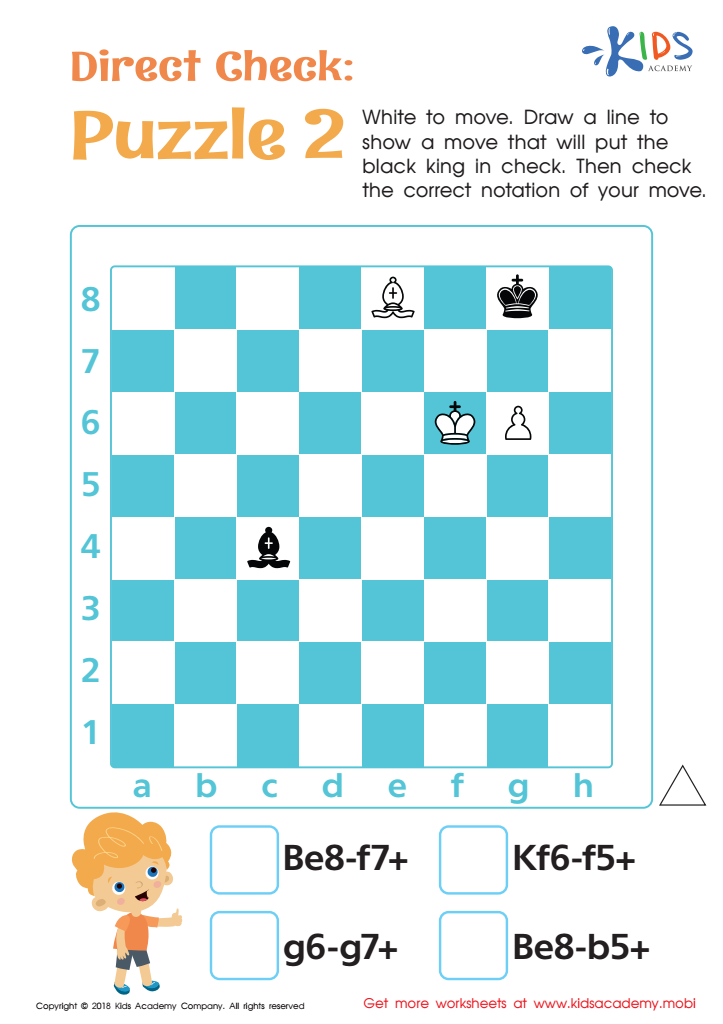

Direct Check: Puzzle 2 Worksheet
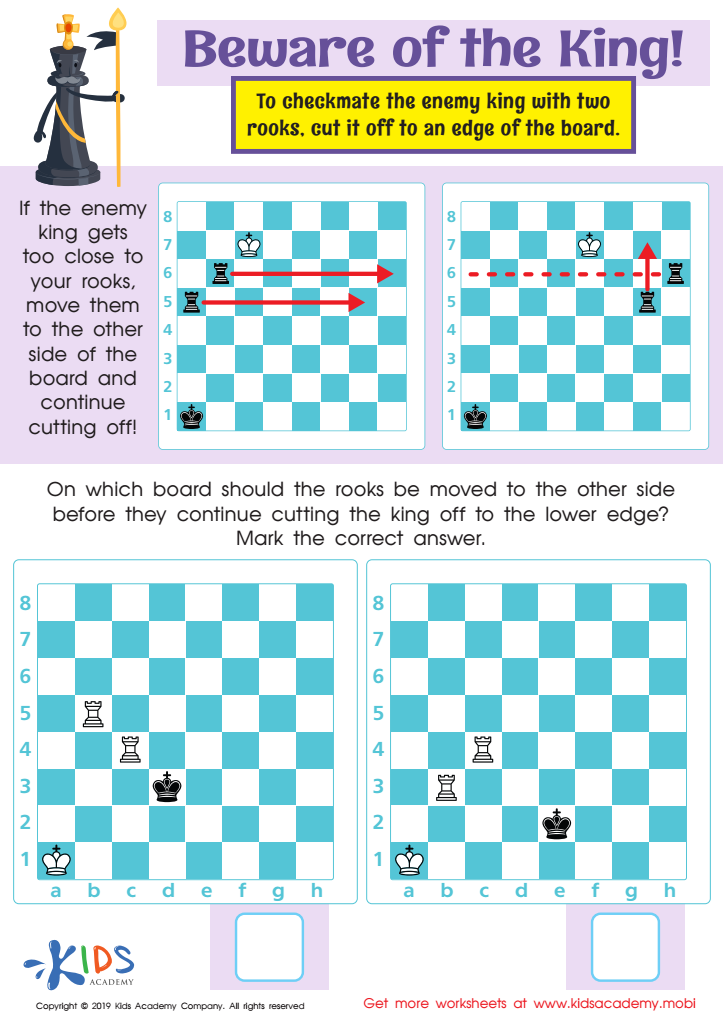

Beware of the King! Worksheet
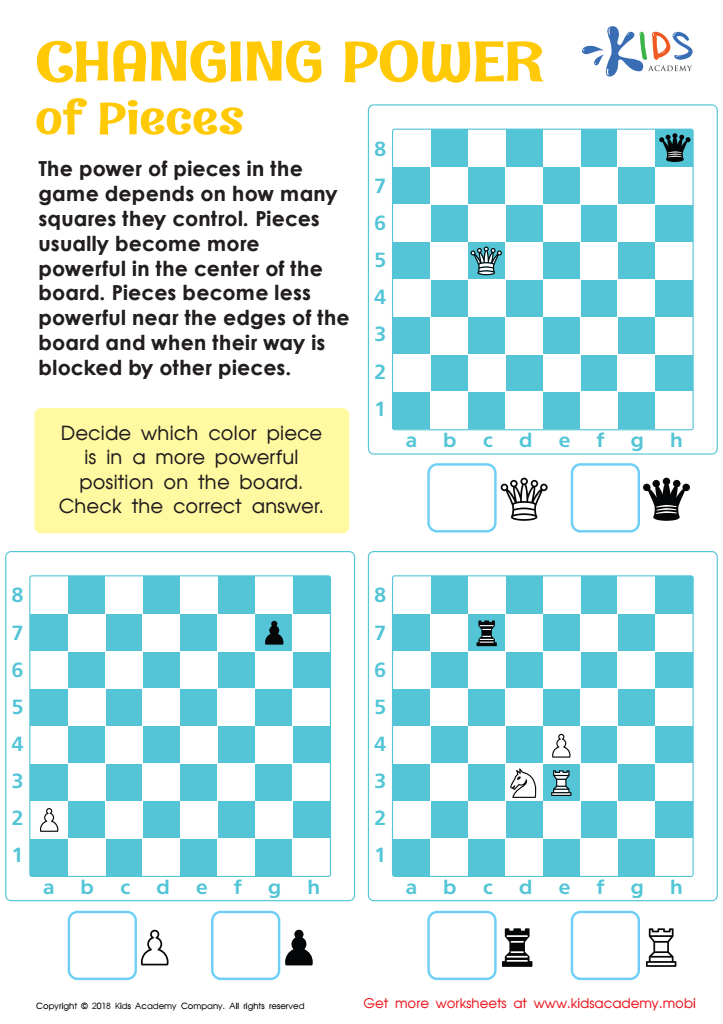

Changing Power of Chess Pieces Worksheet
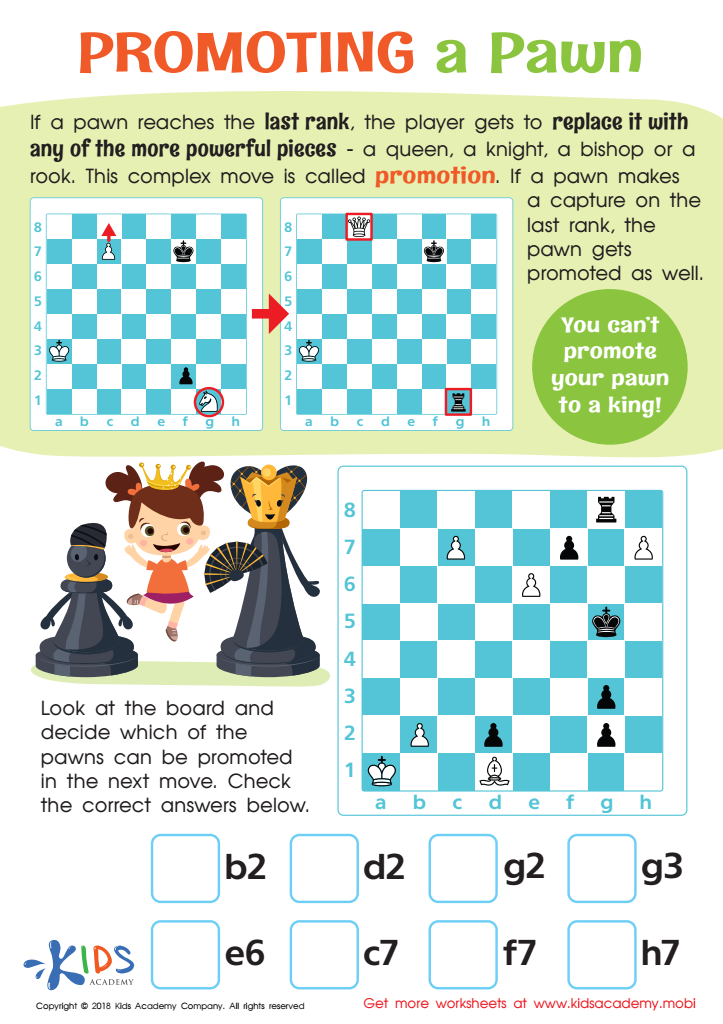

Promoting a Pawn Worksheet
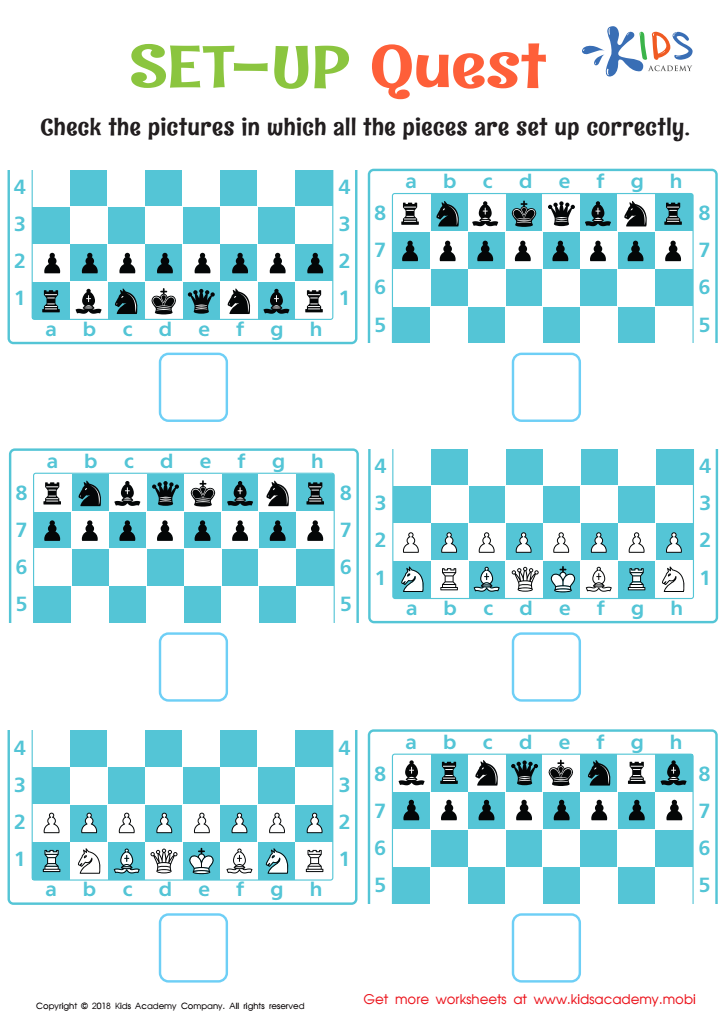

Set-up Quest Worksheet
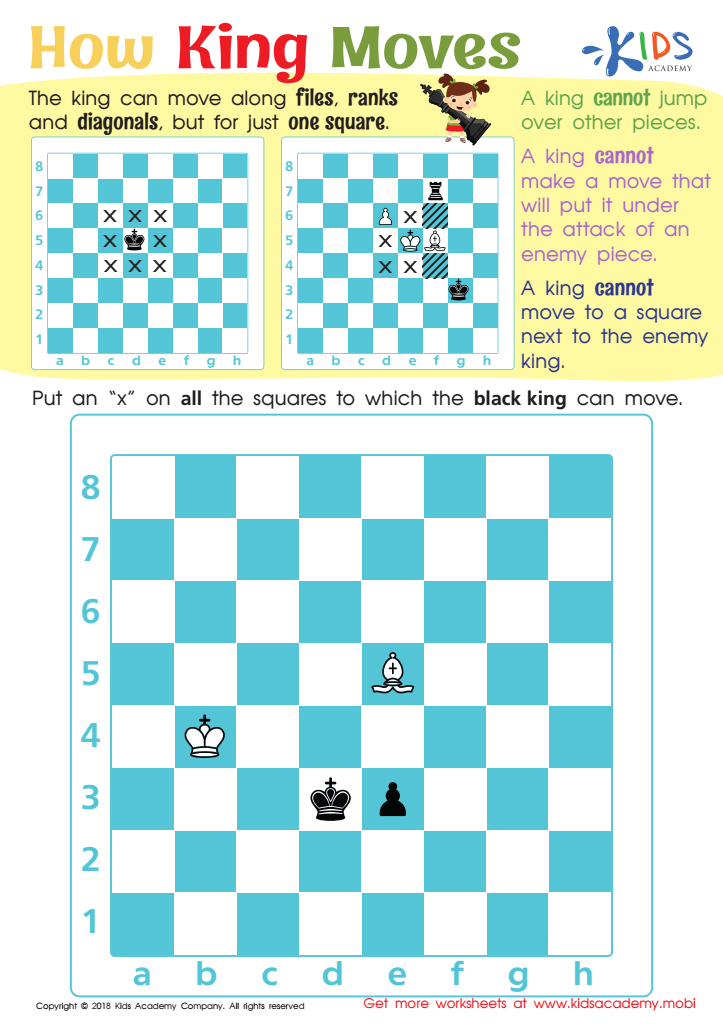

How King Moves Worksheet
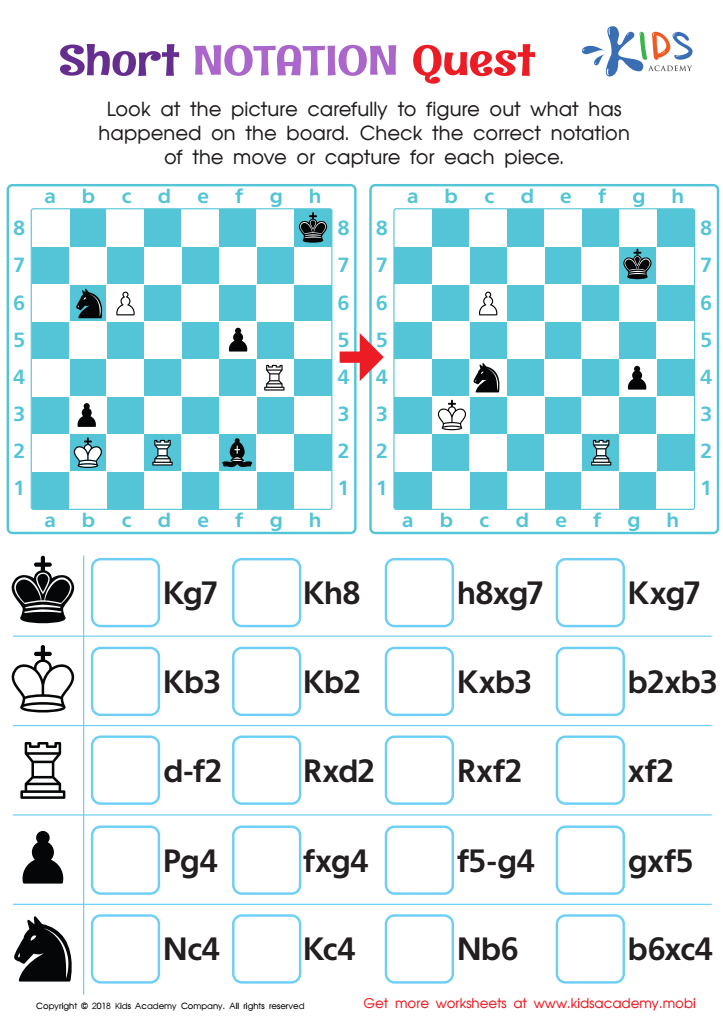

Short Notation Quest Worksheet
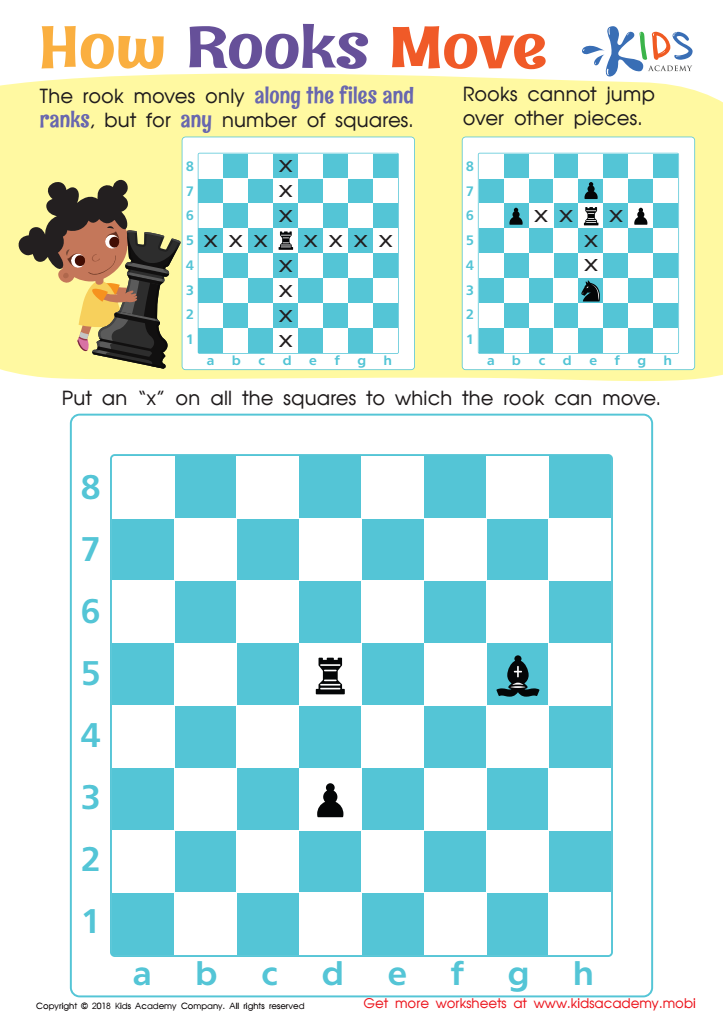

How Rooks Move Worksheet
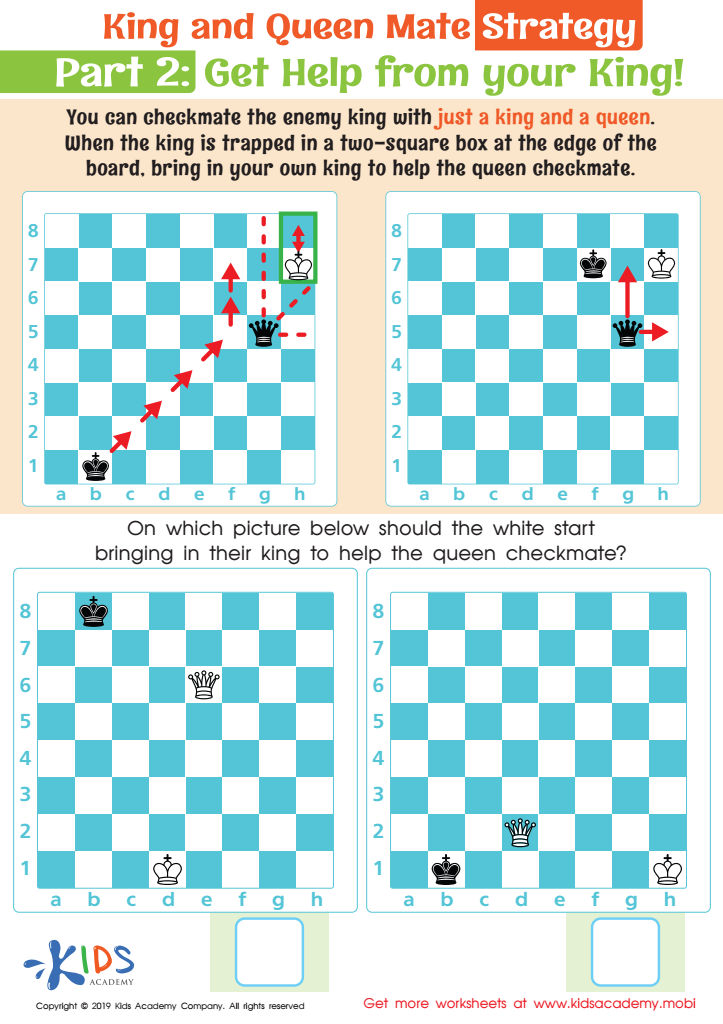

King and Queen Mate Strategy: Part 2 Worksheet
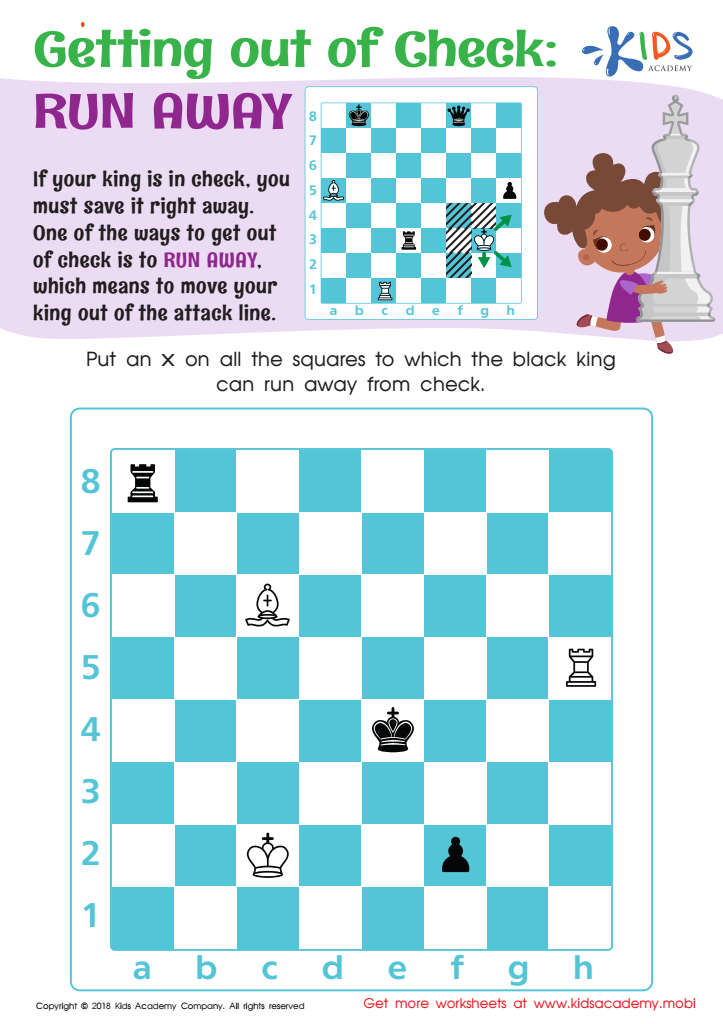

Getting out of Check: Run Away Worksheet
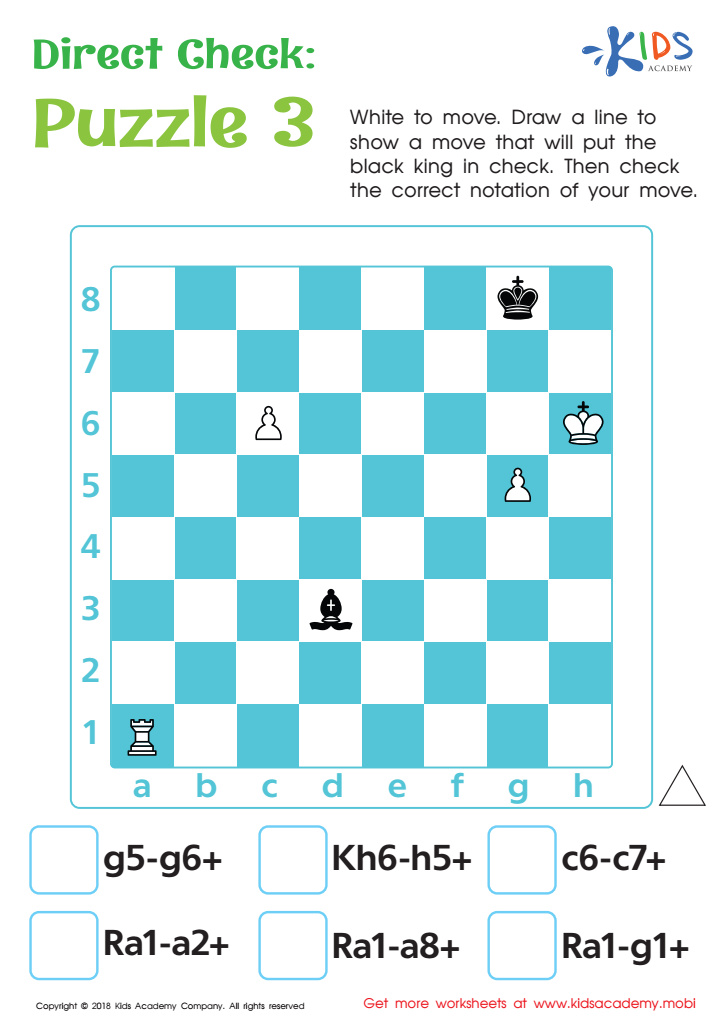

Direct Check: Puzzle 3 Worksheet
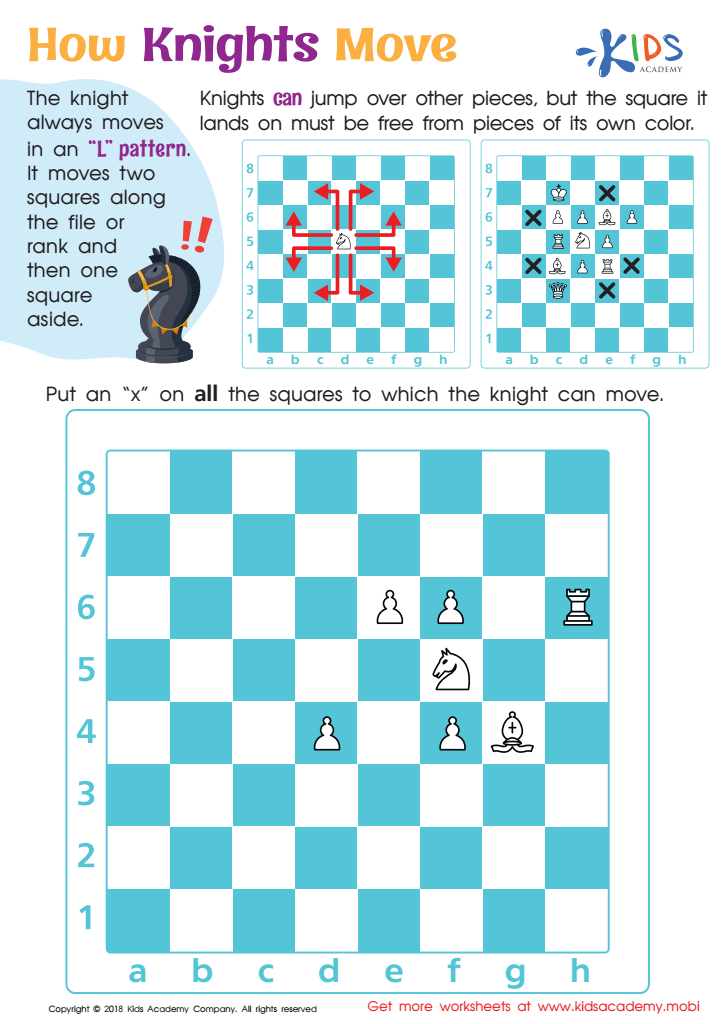

How Knights Move Worksheet
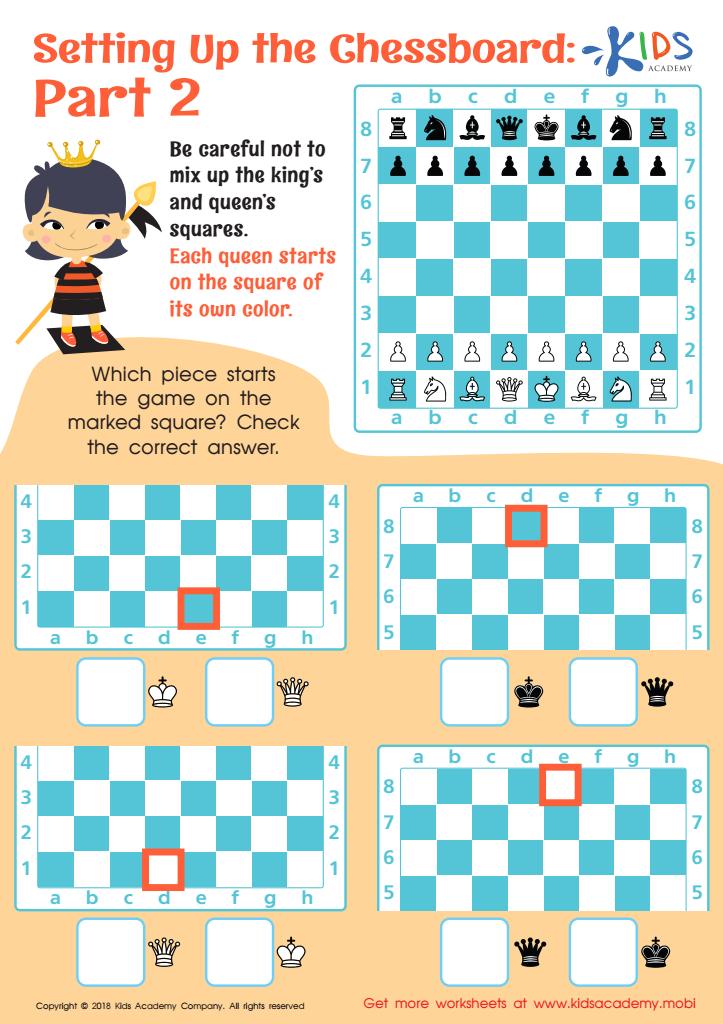

Setting up the Chessboard: Part 2 Worksheet
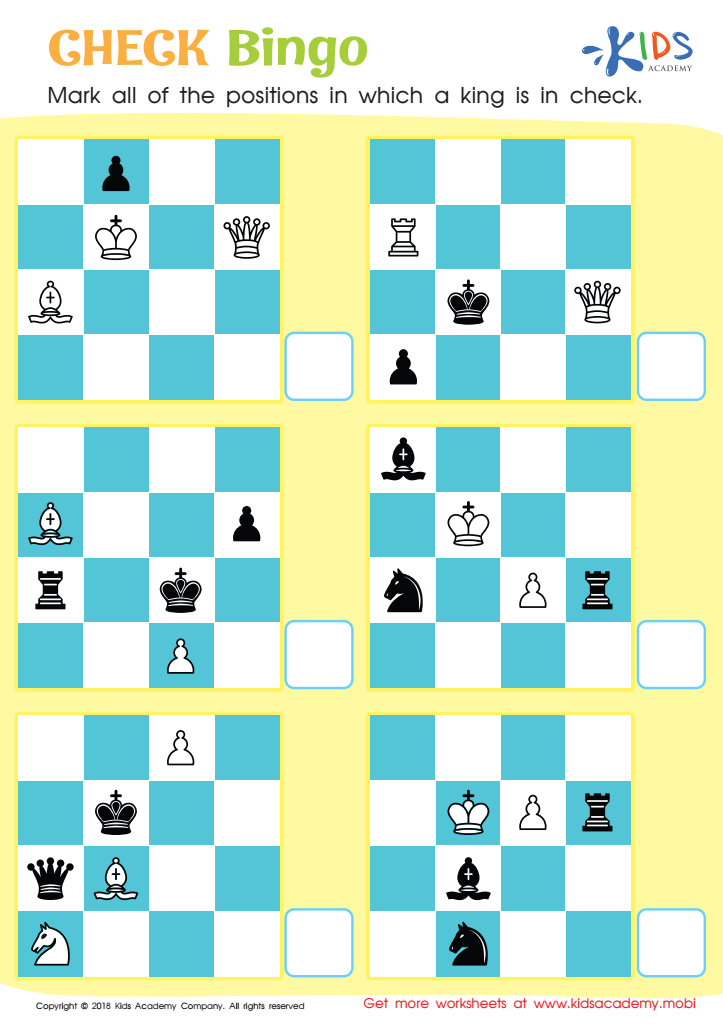

Check Bingo Worksheet
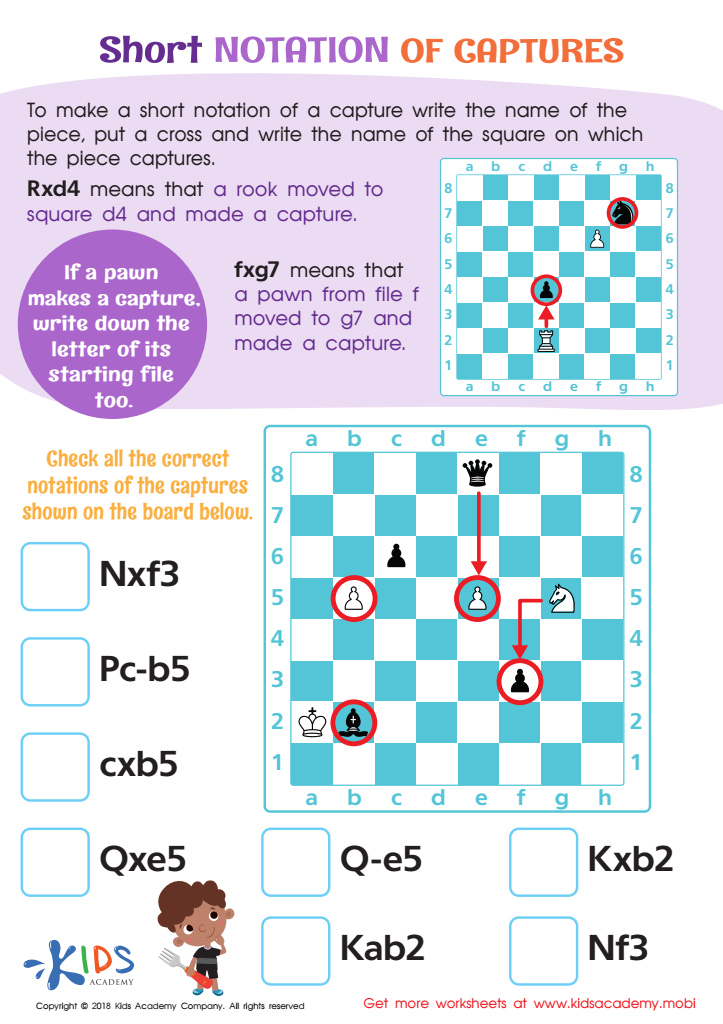

Short Notation of Captures Worksheet
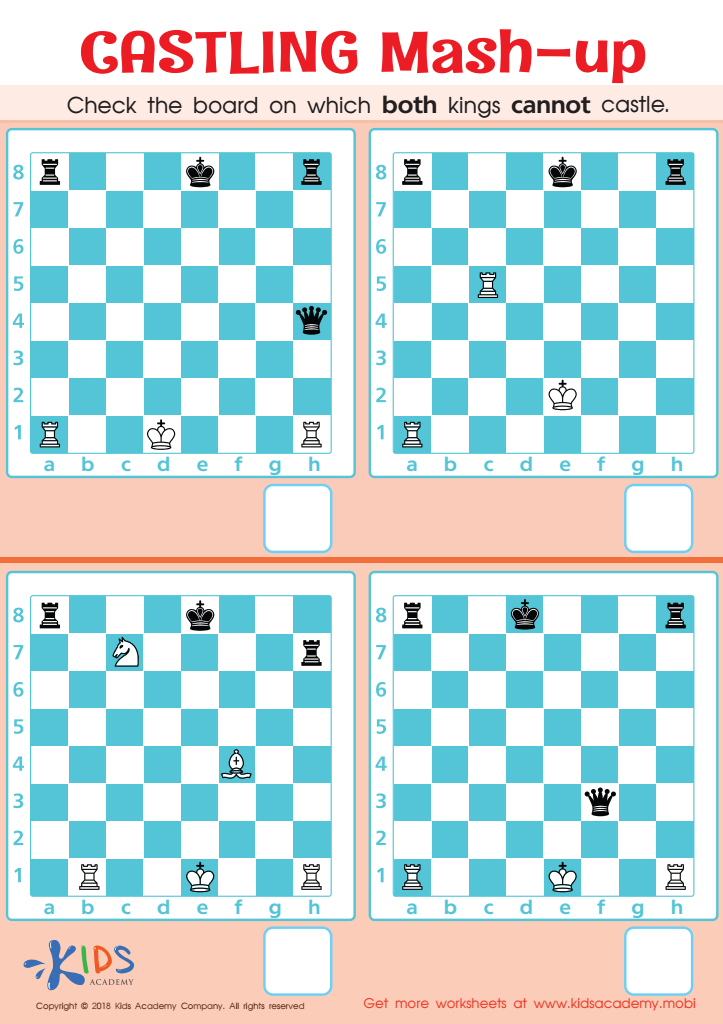

Castling Mash–up Worksheet
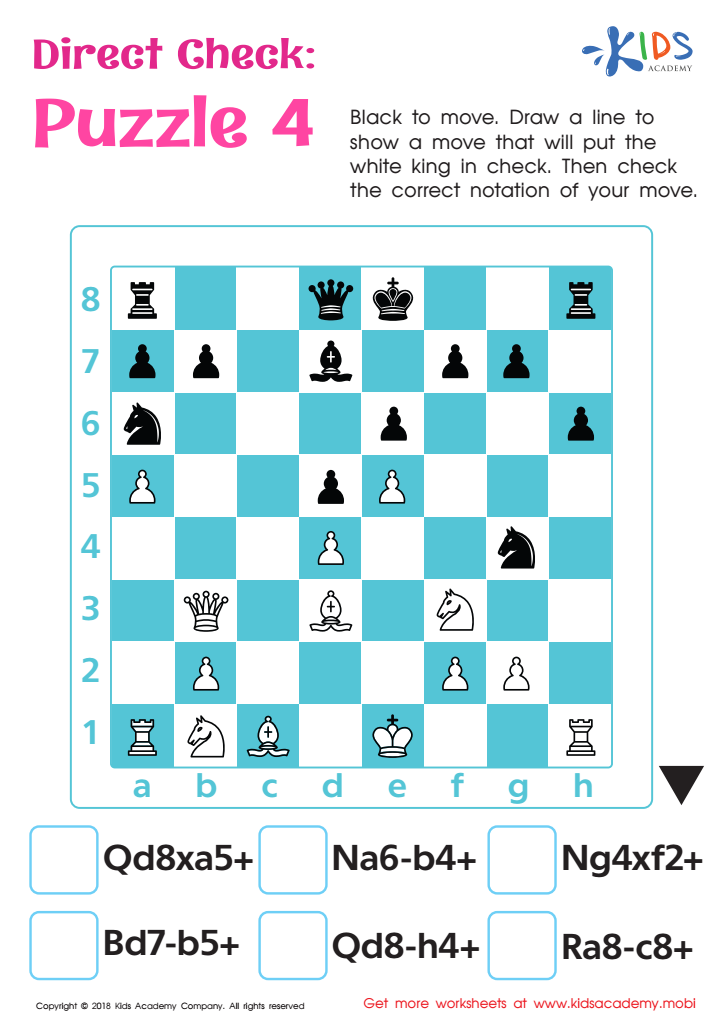

Direct Check: Puzzle 4 Worksheet


King and Queen Mate Strategy: Part 1 Worksheet
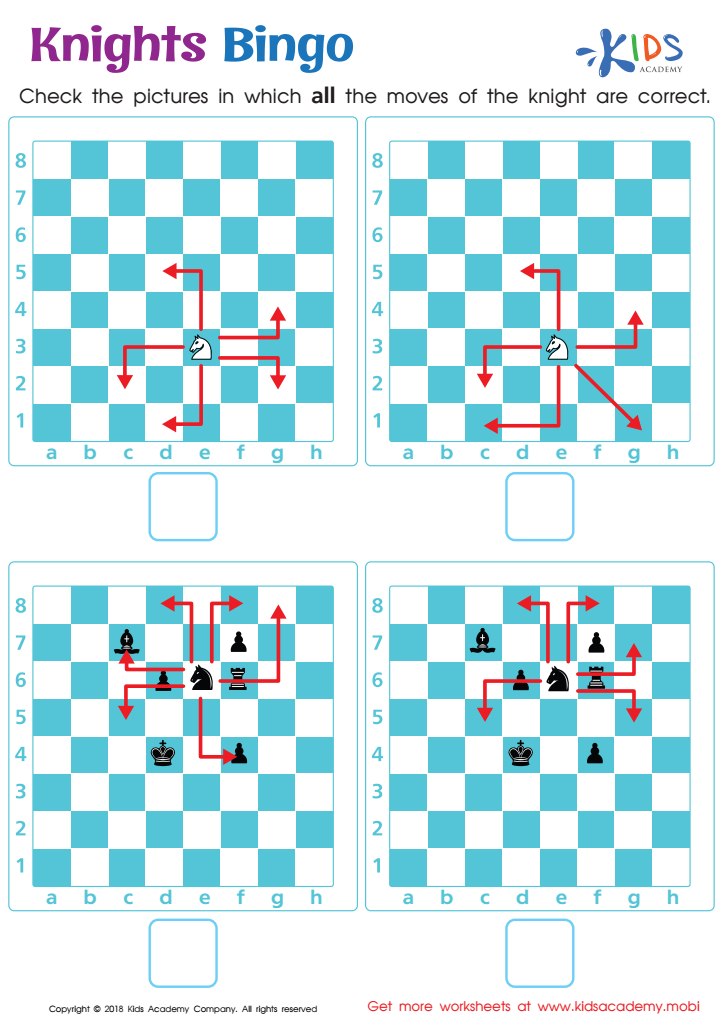

Knights Bingo Worksheet
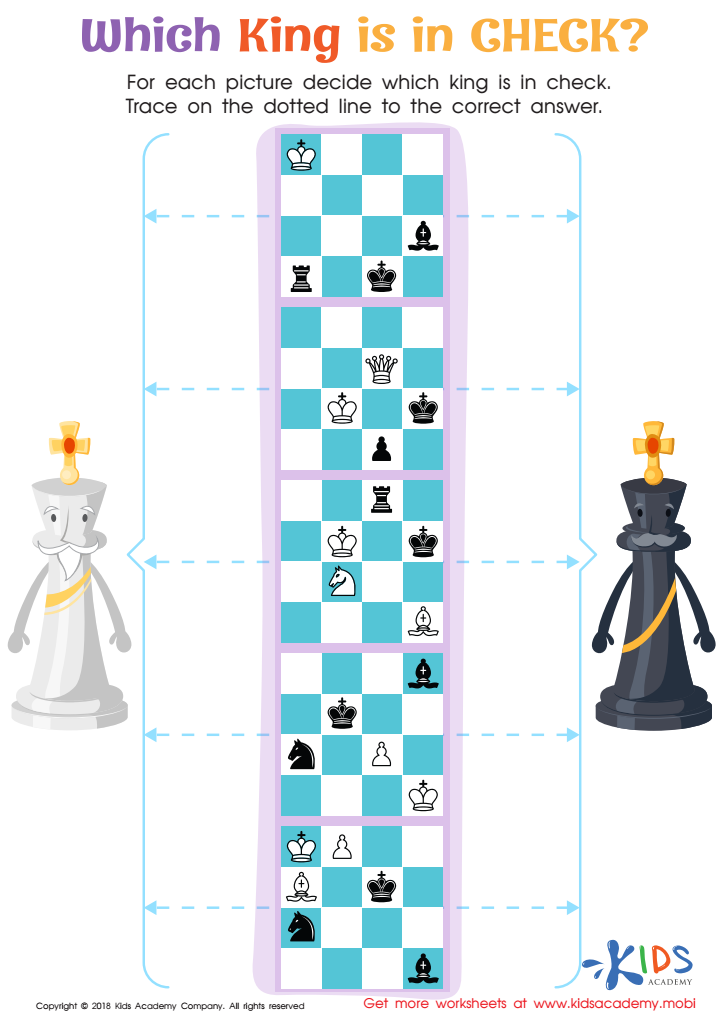

Which King is in Check? Worksheet
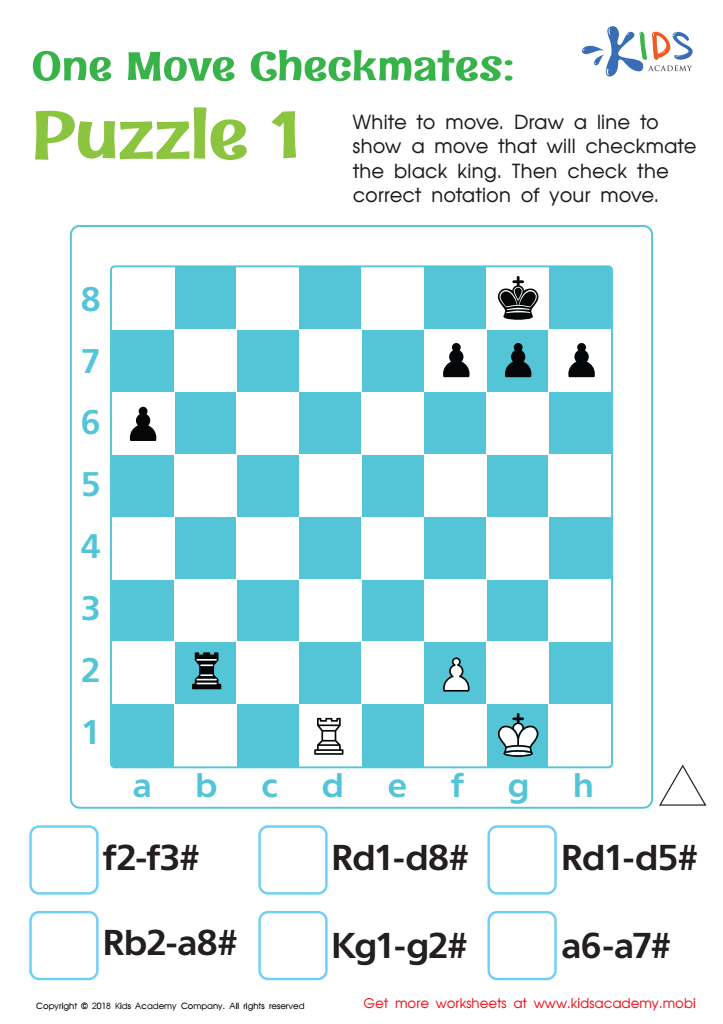

One Move Checkmates: Puzzle 1 Worksheet
Introducing chess to children between the ages of 3 and 7 can provide numerous educational and developmental benefits that should attract the attention of both parents and teachers. Firstly, chess promotes crucial cognitive skills such as critical thinking, problem-solving, and strategic planning. The game encourages children to think several steps ahead and visualize potential outcomes, which can enhance their logical reasoning abilities.
Secondly, chess can improve concentration and patience. Young children often have short attention spans, but engaging in a game that requires focused thought can help extend their ability to concentrate and persist through challenges.
Moreover, chess also teaches important social and emotional skills such as sportsmanship and coping with both winning and losing gracefully. These lessons foster resilience and adaptability, essential qualities for overall emotional development.
Chess can even support academic learning. There is evidence to suggest that chess may enhance mathematical skills since the game involves patterns, sequences, and problem-solving methodologies similar to those used in math and geometry.
Lastly, chess is an inclusive activity that crosses cultural and language barriers, making it an excellent tool for promoting inclusivity and interaction among diverse groups of children. Given these multifaceted benefits, integrating chess into activities for children ages 3-7 is a worthwhile investment in their educational and social development.

 Assign to My Students
Assign to My Students






